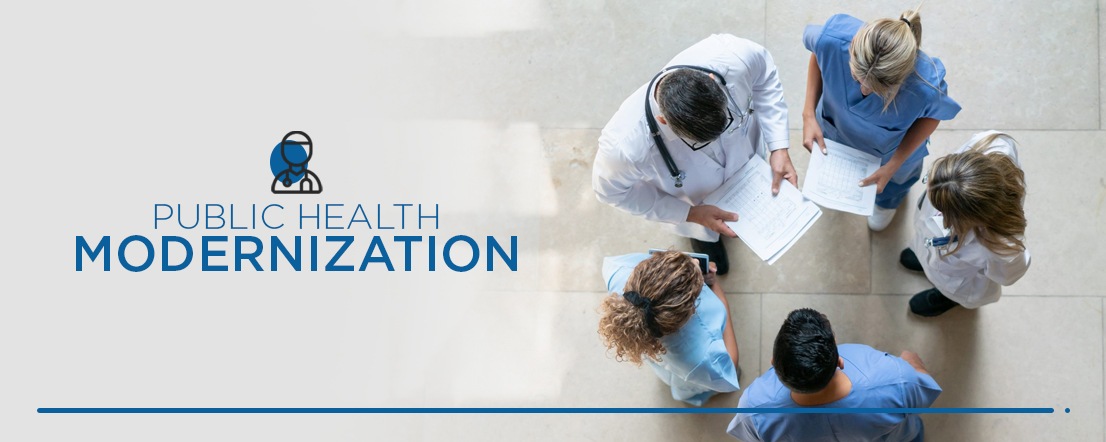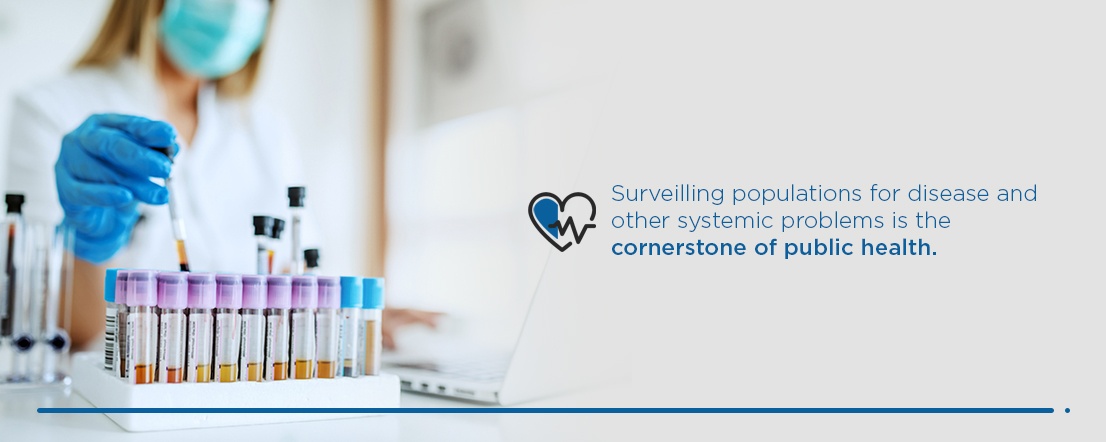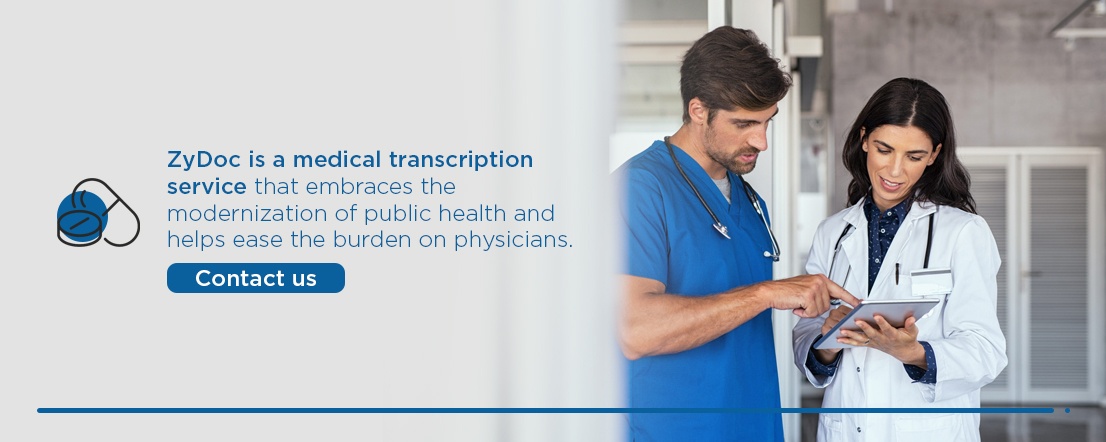Public Health Modernization
Jun 18, 2020 | Jonathan Maisel
Healthcare is experiencing more rapid technological advances than ever before. These advances are occurring at every scale, from delivery of individual care to the way we handle health in our communities. From electronic health records (EHRs) to mobile apps, information technology in public health is improving outcomes for patients and making it easier for doctors and other medical personnel to do their jobs.
What Is Public Health?
Public health is concerned with protecting and promoting the health of communities and the individuals within them. It extends to where people live, receive education and work. The mission of public health includes activities such as conducting research about the current state of a population’s health and making policy decisions based on the findings.
Public health is responsible for launching childhood vaccination campaigns, providing education about the dangers of drugs and alcohol, setting standards for employee working conditions and more. The ultimate goal of a public health department is to advocate for science-based solutions for avoiding disease and injury as well as improve the overall health of local populations.
Modern Challenges of Public Health
There are many health issues that affect the population at large. The Centers for Disease Control and Prevention (CDC) keeps track of the most significant problems in public health, and has compiled a list of the top 10 challenges:
- Alcohol-related harms: Alcohol contributes to around 88,000 deaths per year.
- Food safety: Thousands of people get sick with foodborne illnesses each year, and the cost of these illnesses tops $15.6 billion every year.
- Healthcare-associated infections (HAIs): HAIs occur when someone contracts a new illness while being treated in a medical facility. About one in 25 patients in a hospital may have an HAI.
- Heart disease and stroke: Both heart disease and stroke are leading causes of death in the United States. Prevention of these events starts with education and better charting.
- HIV: Although the rate of new HIV infections is decreasing, there are still around 38,000 new infections each year. Additionally, about one in seven people with HIV are unaware they have been infected.
- Motor vehicle injuries: Motor vehicle accidents are the number one cause of death for people 30 and under. More than 2.3 million emergency room visits each year are due to a vehicular accident.
- Nutrition, exercise and obesity: Most people are aware that there are serious health consequences associated with obesity, yet the majority of adults and children do not get enough exercise or adequate nutrition to maintain a healthy weight.
- Prescription drug overdose: The opioid crisis is still taking thousands of lives each year. Public health departments are working to provide better education about the addictive potential of opioids and offer patients other options for pain management.
- Teen pregnancy: Fewer teens are getting pregnant each year, but almost 200,000 babies are born to females ages 15 to 19 each year.
- Tobacco use: Cigarettes are the leading preventable cause of death in the U.S., contributing to around one in five deaths. Nearly 14 percent of adults currently smoke.
All of these issues can, in one way or another, be improved by modernizing public health infrastructure and leveraging new technology.
Why Is Public Health Modernization Important?

Surveilling populations for disease and other systemic problems is the cornerstone of public health. Information technology in public health is essential for gathering the data needed to create the best outcomes and respond effectively to health threats. Traditionally, this surveillance was done through paper correspondence, but this method allows very limited analysis.
Today, advances in EHRs allow for easy data capture on all patients in the system. Artificial intelligence (AI) and machine learning further improve the level of analysis possible by making sense of massive sets of data. For public health modernization to become even more meaningful, all public health departments must be interoperable and able to extract data from as many sources as possible. The Office of the National Coordinator for Health IT (ONC) has a roadmap designed to promote complete interoperability.
Technology Advances in Public Health
Plans for public health modernization are wide-reaching, but how exactly is it changing how we deal with healthcare on a community scale? These four examples demonstrate the impact new and expanding technologies have:
1. Mobile Information Access
Nearly everyone has a smartphone, and that means patients are better able to access critical medical information and education with the tap of a finger. Public health departments can take advantage of this easy access by creating apps or introducing text message services related to important issues. Delaware, for example, has launched a free app that informs people of what to do if an opioid overdose occurs and where to purchase naloxone to reverse the overdose.
2. Telehealth Expansion
Telehealth is a key technology in modernizing public health. The Extension for Community Healthcare Outcomes (ECHO) project allows doctors in rural or underserved areas to connect virtually with mentors who can help them prepare to address complex health issues. Doctors take part in weekly virtual clinics, maximizing the transfer of information while minimizing the effort needed to obtain it.
3. PULSE
Emergency situations are an area where public health modernization shines. The Patient Unified Lookup System for Emergencies (PULSE) is an online application that improves the efficiency of treatment in emergencies. The system connects to health information exchanges, so volunteers can quickly find health information of victims who may not be able to provide their own information during a disaster. PULSE is an excellent example of collaboration, as it was developed jointly by the ONC, California Emergency Medical Services Authority and others.
4. Natural Language Processing
Natural language processing (NLP) has a variety of exciting applications in healthcare. NLP technology improves the accuracy of EHRs through free text translation and provides more comprehensive data sets for public health departments by turning the text into standardized data. NLP makes healthcare more efficient at the individual level by facilitating medical transcription. A medical transcription service using NLP helps automate charting, so doctors can spend more time with patients and less time on the EHR.
Make Modernization Easy With ZyDoc

ZyDoc is a medical transcription service that embraces the modernization of public health and helps ease the burden on physicians. Thanks to the 21st Century Cares Act, public health is moving toward complete interoperability, which will enable ZyDoc to work with every EHR.
With an easy-to-use interface and solutions that can automatically insert completed documentation into the EHR, ZyDoc’s medical transcription service is one way to modernize the way you deliver care. To find out more, explore our plans and pricing. You can also try the service yourself with a free 14-day trial.
